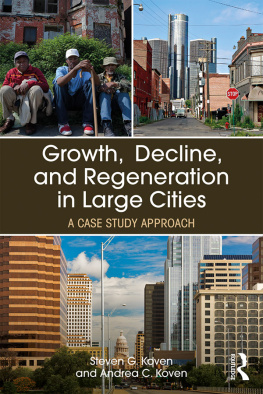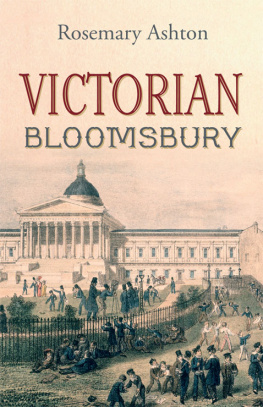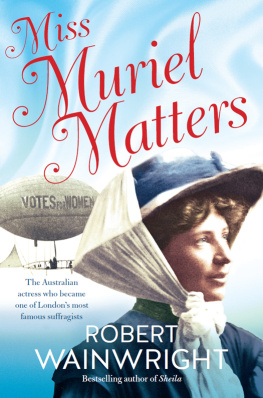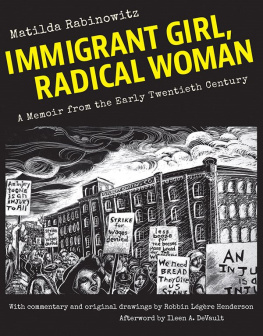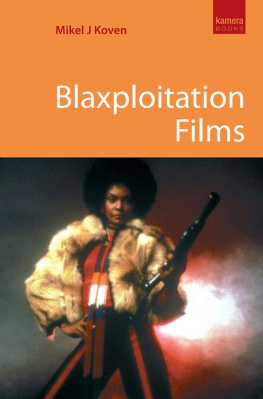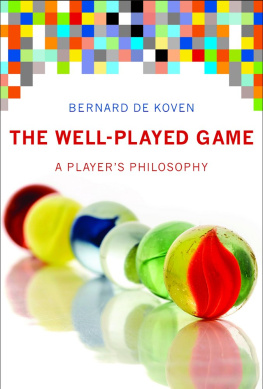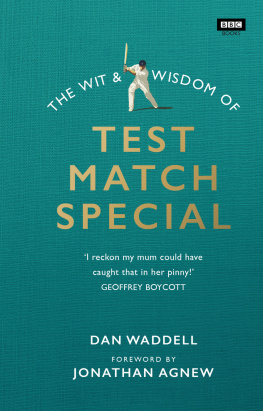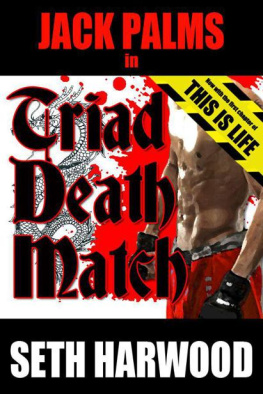
Nellie Dowell and Muriel Lesters East London, c. 1916
Adapted from Kellys Post Office Directory Map, 1916
Bryant and May Match Factory, Fairfield Road Cooks East London Soap Works Bow Church and Gladstone Statue Factory Girls Club, Albert Terrace Original Kingsley Hall, Botolph and Eagling Road Childrens House
Kingsley Rooms, 5860 Bruce Road Bruce Road Congregational Church Kingsley Hall, Powis Road Stepney Union Workhouse, Bromley, St. Leonards Poplar and Stepney Sick Asylum/Poor Law Infirmary (St. Andrews Hospital) Marner Street, school and center of Dowell family life, 1880s to 1900s Berger Hall, Regions Beyond Inland Mission and Medical Missionary Center R. Bell and Company
Limehouse Canal (Cut)
313 Brunswick Road (Harriet Granny Sloans residence) Chrisp Street, Lusitania Riot in Poplar


the Match Girl and the Heiress


the Match Girl and the Heiress

Seth Koven
PRINCETON UNIVERSITY PRESS
PRINCETON AND OXFORD
Copyright 2014 by Princeton University Press
Published by Princeton University Press, 41 William Street, Princeton, New Jersey 08540
In the United Kingdom: Princeton University Press, 6 Oxford Street, Woodstock, Oxfordshire OX20 1TW
press.princeton.edu
Jacket illustration Francesco Bongiorni for Marlena Agency. Jacket design by Faceout Studio All Rights Reserved
Library of Congress Cataloging-in-Publication Data Koven, Seth, 1958 The match girl and the heiress / Seth Koven.
pages cm Includes bibliographical references and index.
ISBN 978-0-691-15850-1 (hardback) 1. Dowell, Nellie, 18761923. 2. Lester, Muriel, 18831968. 3. Women social reformersGreat BritainBiography. 4. FeministsGreat BritainBiography. 5. Great BritainSocial conditions20th century. I. Title.
HQ1595.A3K69 2015
305.420922dc23
[B] 2014013276
British Library Cataloging-in-Publication Data is available This book has been composed in Minion Pro with ITC Benquiat Std display Printed on acid-free paper.
Printed in the United States of America 1 3 5 7 9 10 8 6 4 2

For Joan, Daniel, Zoe, and Eliwith love.

Contents

CHAPTER ONE
Victorian Childhoods and Two Victorian Children 21
CHAPTER TWO
Capitalism, from Below and Down Under: The Global Traffic in Matches and Match Girls 77
CHAPTER THREE
Being a Christian in Edwardian Britain 135
CHAPTER FOUR
Body Biographies in War and Peace 184
CHAPTER FIVE
Love and Christian Revolution 256
Acknowledgments

T HIS BOOK BEARS ONLY my name on its cover and title page. Single authorship is one of the many fictions of the discipline of history. So many have made it possible for me to write this. Endnotes not only point readers to sources, they also begin to tell the story of gladly incurred debts and obligations. Thats why I have so many of them.
A year-long fellowship from the National Endowment for the Humanities launched this project and got me into archives. I thank the Department of History at Rutgers University, New Brunswick and the School of Arts and Sciences for generous leave time and research funds. Without this, my scholarship could not happen. Home to a remarkable cohort of scholars in all fields, Rutgers is a bit of heaven for historians of gender, sexuality, women, and culture across time and space. Julie Livingston opened up new possibilities for thinking about the body, pain and medical archives and closely read sections of this book several times. Ann Fabian contributed her artful intellect to honing important arguments. Carla Yanni in Art History has tried her best to teach me how to see and read the built environment and been an invaluable collaborator in institution building through the Rutgers British Studies Center. Many other Rutgers colleagues have contributed insights through conversations they may well not even remember: Indrani Chatterjee, Alice Echols, Kate Flint, Jennifer Jones, Toby Jones, Temma Kaplan, Jennifer Mittelstadt, Barry Qualls, Johanna Schoen, Bonnie Smith, and Judith Surkis. Belinda Davis and Pieter Judson deserve special thanks for homemade delicacies, which sweetened their vigorous critiques of my manuscript as it emerged out of partially formed ideas. I cant imagine a more generous writing group. The brilliant work of Rutgers graduate students has greatly enriched this book. SomeAllison Miller, Christopher Bischof, Yvette Lane, and Kate Imy among themalso offered cogent critiques of individual chapters.
A research leave at the University of California, Berkeley came at a perfect time as I was writing the first half of this book. Thomas Laqueur has provided years of inspiring friendship and intellectual comradeship. Long ago, he told me that I was writing a history of the ethical subject. At the time, I had no idea what he meant, but his provocation got me going. James Vernon forgave me for asking him to read chapters full of first names and made them better. Other colleagues in Berkeley welcomed me, swapped ideas, and read work: Margaret Anderson, John Connelly, Catherine Gallagher, John Gillis, Carla Hesse, Alan Karras, David Lieberman, Fredric Mintz, Mark Peterson, Ethan Shagan, Jonathan Sheehan, and Yuri Slezkine. Fourteen months as a visiting scholar in residence at the Department of History, University of Pennsylvania provided undisturbed solitude for finishing this book. Lynn Lees, a true model of excellence, made this possible. I kept close at hand her incisive criticisms of the entire manuscript.
Adele Lindenmeyr has been nothing short of a lifesaver. Faster and vastly more intellectually agile than any special delivery service, she read countless drafts and helped bring clarity to my ideas and prose. Paul Steege helped me to think hard about Alltagsgeschichte. I presented parts of this project at Johns Hopkins at its inception and much later when it was almost finished. I thank Judith Walkowitz for her astute comments and John Marshall for resisting several key arguments: figuring out why made them stronger. Matt Houlbrook has been part of this from the outset and unstinting in his critical generosity. Sue Morgan and Joy Dixon did their best to guide me through the thickets of Victorian religion, spirituality and theology. Leela Gandhi helped me conceptualize affect and ethics; Martha Vicinus pushed me to sharpen my arguments about female amity and much else while Kali Israel asked good questions about life writing and storytelling. Sally Alexander told me things about what I had written that I could not have seen without her. Sonya Michel brought her unsentimental acumen to bear on several chapters while supporting this work with the great gift of her friendship. For many years, Olivia Dix has made me feel at home in London by opening hers to me.
Next page

